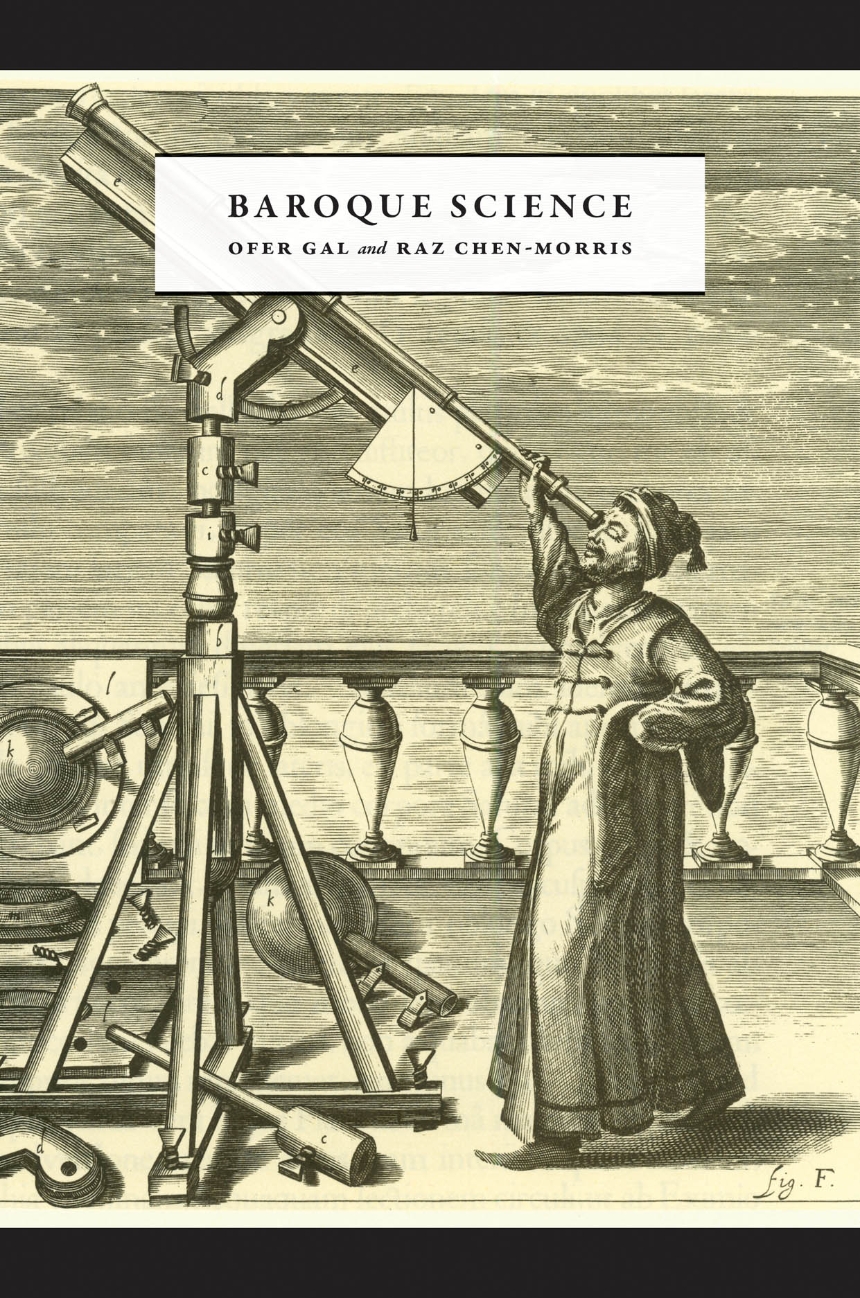Baroque Science
In Baroque Science, Ofer Gal and Raz Chen-Morris present a radically new perspective on the scientific revolution of the seventeenth century. Instead of celebrating the triumph of reason and rationality, they study the paradoxes and anxieties that stemmed from the New Science and the intellectual compromises that shaped it and enabled its spectacular success.
Gal and Chen-Morris show how the protagonists of the new mathematical natural philosophy grasped at the very far and very small by entrusting observation to the mediation of artificial instruments, and how they justified this mediation by naturalizing and denigrating the human senses. They show how the physical-mathematical ordering of heavens and earth demanded obscure and spurious mathematical procedures, replacing the divine harmonies of the late Renaissance with an assemblage of isolated, contingent laws and approximated constants. Finally, they show how the new savants, forced to contend that reason is hopelessly estranged from its surrounding world and that nature is irreducibly complex, turned to the passions to provide an alternative, naturalized foundation for their epistemology and ethics.
Enforcing order in the face of threatening chaos, blurring the boundaries of the natural and the artificial, and mobilizing the passions in the service of objective knowledge, the New Science, Gal and Chen-Morris reveal, is a Baroque phenomenon: deeply entrenched in and crucially formative of the culture of its time.
Gal and Chen-Morris show how the protagonists of the new mathematical natural philosophy grasped at the very far and very small by entrusting observation to the mediation of artificial instruments, and how they justified this mediation by naturalizing and denigrating the human senses. They show how the physical-mathematical ordering of heavens and earth demanded obscure and spurious mathematical procedures, replacing the divine harmonies of the late Renaissance with an assemblage of isolated, contingent laws and approximated constants. Finally, they show how the new savants, forced to contend that reason is hopelessly estranged from its surrounding world and that nature is irreducibly complex, turned to the passions to provide an alternative, naturalized foundation for their epistemology and ethics.
Enforcing order in the face of threatening chaos, blurring the boundaries of the natural and the artificial, and mobilizing the passions in the service of objective knowledge, the New Science, Gal and Chen-Morris reveal, is a Baroque phenomenon: deeply entrenched in and crucially formative of the culture of its time.
352 pages | 51 halftones | 6 x 9 | © 2013
Art: European Art
History: History of Ideas
Physical Sciences: History and Philosophy of Physical Sciences
Reviews
Table of Contents
List of Figures
Acknowledgments
Acknowledgments
Introduction
I OBSERVATION
1 Science’s Disappearing Observer: Baroque Optics and the Enlightenment of Vision
2 Per aenigmate: Mirrors and Lenses as Cognitive Tools in Medieval and Renaissance Europe
3 The Specter of the Telescope: Radical Instrumentalism from Galileo to Hooke
II MATHEMATIZATION
4 Nature’s Drawing: Problems and Resolutions in the Mathematization of Motion
5 From Divine Order to Human Approximation: Mathematics in Baroque Science
6 The Emergence of Baroque Mathematical Natural Philosophy: An Archeology of the Inverse Square Law
III PASSIONS
7 Passions, Imagination, and the Persona of the New Savant
Abbreviations
Notes
Bibliography
Index
